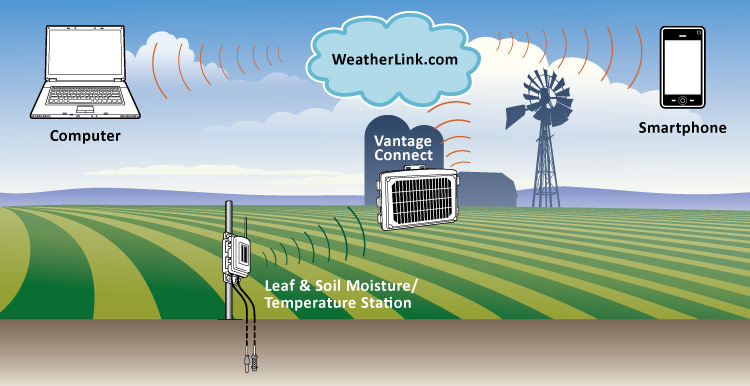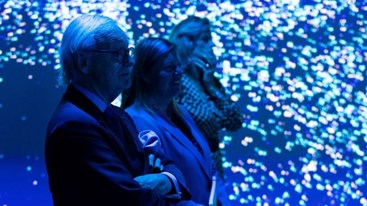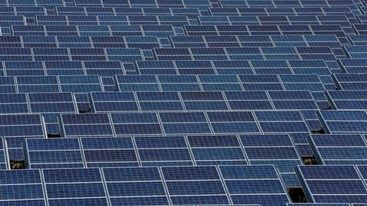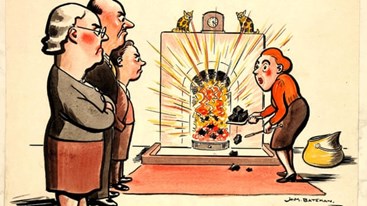Monday, 06/05/2024 | 17:22 GMT+7
On March 19, the White House announced Executive Order 13693—Planning for Federal Sustainability in the Next Decade. Building on the goals set forth in E.O. 13514 (2009), the new order calls for a 2.5 percent annual reduction in energy use and a 2 percent annual reduction in water use through 2025. In support of these ambitious performance goals, GSA’s Green Proving Ground (GPG) program recently published the results of three evaluations of technologies with the potential to cost-effectively reduce the energy and water use of our federal buildings. Two of these technologies—wireless pneumatic thermostats and wireless soil-moisture sensors for irrigation control—use wireless networks to bring real-time data and control to traditionally static systems. The third—catalyst-based non-chemical water treatment—leverages basic chemistry to resolve calcification, a ubiquitous challenge in facilities management.
Wireless Pneumatic Thermostats (WPT)
Conventional pneumatic thermostats have the ability to gauge room temperature to adjust heating and cooling, but they cannot communicate with a central control system or exercise more sophisticated control strategies. Wireless pneumatic thermostats (WPT) can be retrofitted onto an existing pneumatic system to give them the functionality of contemporary digital control systems, at a fraction of the cost of a full change-out. GPG commissioned Oak Ridge National Laboratory (ORNL) to assess the technology at the Woodrow Wilson International Center for Scholars in Washington, DC, and found that WPT has the ability to successfully connect with a central control system and implement energy-saving control strategies. GPG found that WPT has the ability to cost-effectively implement energy-saving control strategies across a wide spectrum of facilities and climates, with simple payback as low as two years.

Wireless Soil-Moisture Sensors for Irrigation
With severe drought in the Western states, water conservation is more important than ever. Smart controls for landscape irrigation use live data to determine real-time watering needs, with potential water savings of 20-40 percent compared to timer-based systems. In 2013, GPG commissioned Pacific Northwest National Laboratory to assess two forms of smart irrigation controls. In January, GPG released the results of its assessment of weather-based smart irrigation at the Hart-Dole-Inouye Federal Center in Battle Creek, MI. This month, GPG published the outcomes from its evaluation of a pre-commercial wireless soil-moisture sensor-based smart system at the George C. Young Federal Building and U.S. Courthouse in Orlando, FL. Compared with weather-based systems, sensor-based controls offer the potential for more precise measurement of watering needs, particularly in landscapes with varied topography or soil types. While the early-production system installed in Orlando was challenged by stability issues, the report presents lessons learned and economic analysis in support of potential future evaluations of commercial sensor-based irrigation control systems.

Catalyst-Based Non-Chemical Water Treatment (NCWT)
According to the U.S. Geological Survey, more than 85 percent of the United States has hard water. In plumbing, hard water leaves calcite deposits that restrict water flow by congesting pipes. In water heaters, calcite deposits on heating elements can cause overheating and premature failure. GPG commissioned ORNL to assess the effectiveness of a catalytic insert that alters the chemistry of hard water to prevent calcite buildup at the Frank E. Moss Federal Courthouse in Salt Lake City, UT. Researchers found that catalyst-based NCWT dramatically reduced calcite buildup and had immediate payback when compared to a chemical system. The evaluation concluded that catalyst-based NCWT should be considered for deployment in any heating system that is subject to calcification, including hydronic heating systems and boilers, condensing boilers, and gas and electric water heaters.
Truong Duy








.jpg?w=367&h=206&mode=crop) Energy efficiency and conservation usage is an important aspect of the national energy development strategy
05/03/2024
Energy efficiency and conservation usage is an important aspect of the national energy development strategy
05/03/2024
 Challenges and Opportunities to promote energy efficiency market in Vietnam
Challenges and Opportunities to promote energy efficiency market in Vietnam
 The Ministry of Industry and Trade requests government agencies to coordinate in organizing Earth Hour 2024
The Ministry of Industry and Trade requests government agencies to coordinate in organizing Earth Hour 2024
 Consultation on Energy Efficiency Boiler Catalogue and Wood Drying Guideline
Consultation on Energy Efficiency Boiler Catalogue and Wood Drying Guideline
.png?w=367&h=206&mode=crop) Request for expression of interest - C2.1.13: Capacity Building on energy efficiency policies development
Request for expression of interest - C2.1.13: Capacity Building on energy efficiency policies development
 Son Ha Co., Ltd, applies energy efficiency and conservation measures
Son Ha Co., Ltd, applies energy efficiency and conservation measures
 Phuc Kien Co., Ltd., is effectively implementing energy-saving measures
Phuc Kien Co., Ltd., is effectively implementing energy-saving measures
 Request for expression of interest - C2.1.12: Independent monitoring of safeguards implementation
Request for expression of interest - C2.1.12: Independent monitoring of safeguards implementation